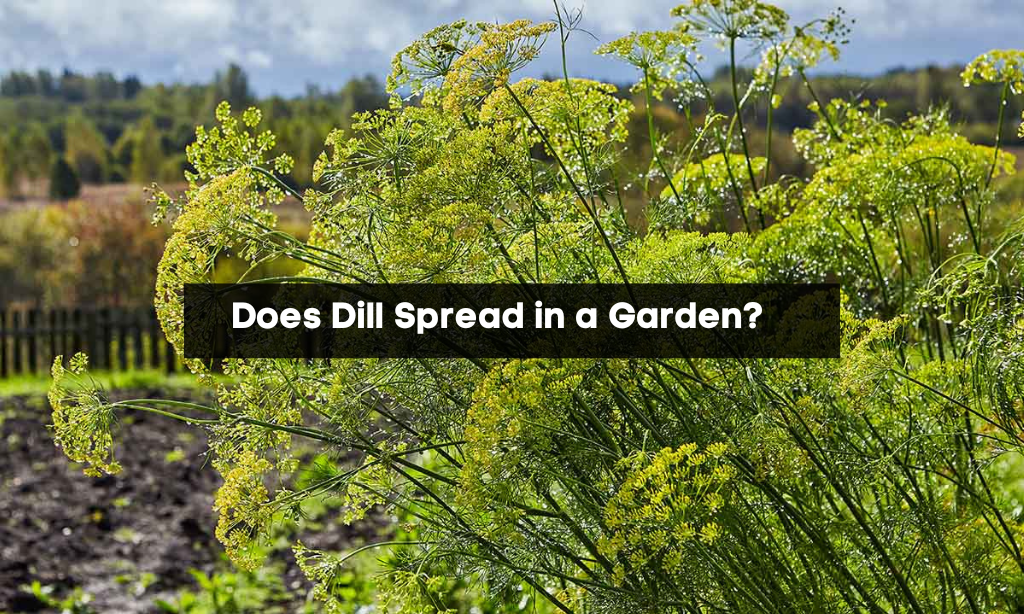Are you considering adding Dill to your garden but worried about it taking over? It’s a valid concern. Dill is a popular herb with a distinct flavour and appearance, but it can spread rapidly if not managed properly.
In this article, we’ll answer the burning question, “Does dill spread in a garden?” and provide tips and tricks to keep your Dill under control.
We’ve covered you, from Dill’s growth cycle to best practices for preventing its spread. So, please keep reading to learn everything you need about growing Dill without letting it take over your garden.
What is Dill?
Dill is a green herb with feathery leaves and a unique flavour.
It has been used for cooking and medicine for thousands of years, originating from the Mediterranean and southern Russia.
There are two main types of Dill: common Dill and Indian Dill, both with different uses.
Dill’s Growing Requirements
Dill is a hardy herb that is relatively easy to grow, making it a popular choice for novice and experienced gardeners.
It thrives in loose, well-draining soil with a pH between 5.5 and 6.5. Dill prefers full sun, but it can tolerate some shade, especially in hotter climates.
As for watering, Dill likes to be kept consistently moist but not waterlogged. Overwatering can lead to root rot, so water only when the top inch of soil feels dry to the touch.
Does Dill Spread in a Garden?
Yes, Dill can spread in a garden due to its deep root system, abundant seed production, and bushy growth habit.
These factors allow it to take over adjacent areas and crowd out other plants if not appropriately managed.
Dill’s Propagation Methods
Dill can be propagated through several methods, including seed sowing, transplanting, and cloning.
Seed sowing is the most common way to propagate Dill.
To sow dill seeds:
- Prepare the soil by loosening it and adding compost or fertilizer.
- Plant the seeds about ¼ to ½ inch deep, spacing them 12-18 inches apart.
- Keep the soil consistently moist, and the seeds should germinate in 7-21 days.
Transplanting Dill is another option, but it’s best done when the plants are young. To transplant, dig up the young plants and carefully move them to a new location with well-draining soil.
Lastly, Dill can be cloned through stem cuttings. Take a 4-6 inch cutting from a mature dill plant and remove the leaves from the bottom half. Plant the cutting in a pot filled with moist potting soil, and keep it in a warm, bright location until roots develop.
The Pros and Cons of Dill Spreading
Here is a table summarizing the pros and cons of Dill spreading in a garden:
| Pros of Dill Spreading | Cons of Dill Spreading |
|---|---|
| Attracts beneficial insects such as bees, butterflies, and ladybugs | Crowds out other plants and reduces biodiversity |
| Improves soil health through its deep root system | Can be challenging to control growth and prevent spreading |
| Adds an attractive and fragrant addition to the garden | Abundant seed production can lead to unwanted growth in other areas |

How to Prevent Dill from Spreading
Preventing Dill from spreading in your garden is crucial to maintaining a healthy and diverse garden ecosystem.
Here are some best practices to control Dill’s spread:
- Harvest Dill regularly: Regular harvesting can prevent Dill from going to seed and spreading throughout your garden. Cut off the flower heads before they mature and scatter the seeds.
- Use mulch: Applying a layer of mulch around dill plants can prevent seeds from reaching the soil and germinating. Mulch can also suppress the growth of new dill seedlings.
- Use gardening tools: Use a hoe or rake to uproot unwanted dill seedlings as soon as they emerge. Make sure to dispose of the uprooted plants in the garbage rather than the compost pile to prevent them from reseeding.
- Grow Dill in Containers: Growing Dill in containers can prevent its spread in your garden. Use a deep container with well-draining soil, and keep the soil moist.
Frequently Asked Questions
Q: How do I know when to harvest Dill?
A: Look for the appearance of yellow flowers or seed heads, which usually emerge about 8-10 weeks after planting.
Q: Can dill grow in partial shade?
A: Yes, Dill can grow in partial shade, but it will thrive in full sun.
Q: What is the best time of the year to plant Dill?
A: The best time to plant Dill is in the spring after the last frost or in the fall, about 2-3 weeks before the first expected frost.
Q: How do I keep pests from eating my dill plants?
A: To keep pests away from your Dill, try companion planting with other herbs and flowers, or use organic pest control methods such as handpicking and spraying with neem oil.
Q: Can I use Dill in savoury and sweet dishes?
A: Yes, Dill can be used in savoury and sweet dishes and is a versatile herb that pairs well with various flavours.
Conclusion
In short, yes, Dill can spread in a garden if left to go to seed. However, with proper pruning and care, it is possible to control its spread and prevent it from becoming invasive.

